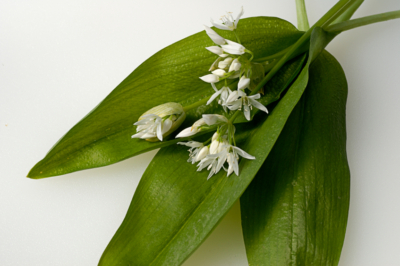In many regions, wild garlic is a popular seasoning plant in spring dishes. However, when collecting it in the forest, there is a risk of confusion with highly poisonous plants that should not be underestimated. Wild garlic is not poisonous.

Contents
The poisonous doppelgangers of wild garlic
The danger of confusing wild garlic with other plants is so great because often several plants with similarly shaped leaves share the same location with wild garlic in the forest. When eaten, the following plants in particular are highly poisonous:
- the lily of the valley
- the poisonous Aaron’s bane
- the autumn crocus
Pickling and preserving wild garlic
Wild garlic for the kitchen: harvest time and interesting facts
Since even small amounts of the leaves of these species can be highly toxic or even deadly, collecting wild garlic in the forest should always be done with the greatest concentration and never quickly and over a large area. Planting wild garlic in a shady location in your own garden offers somewhat more safety, as mixing with other plants can be prevented here.
Recognize the wild garlic correctly
Even if the leaves of wild garlic differ slightly from those of its doppelgangers when you look very closely, you should always also carry out an odor test. To do this, rub a small part of a wild garlic leaf between your fingers until you detect a garlicky odor. This smell only occurs with the leaves of wild garlic and not with its doppelgangers. However, the hands must be grown in between for repeated use of this test, otherwise the odor adhering to the hands could have disastrous consequences.
Tips & Tricks
During the flowering season wild garlic is easier to find in the forest, because then the sometimes spherical flowers of up to twenty white individual flowers on long stalks stick out of the ground and spread a characteristic smell.

